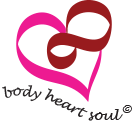When we receive an intuitive emotional or body feeling regarding something we should or shouldn’t do, this is a form of guidance called Empathy. There are countless anecdotes concerning intuitive guidance from our feelings in the body, visions and intuitive hunches, as well as scientific evidence for the efficacy of following such guidance.
Edgar Cayce’s compared Empathy to being a Zen archer. This Zen archer could hit the bull’s-eye of a target from sixty feet in total darkness by “becoming one with the target.” Both the archer and Cayce looked within themselves to find knowledge. But, ultimately, the importance of empathic intuition is not protective guidance or “trick-shooting;” it is that intuition leads us to awareness of “our true nature, One with God.”
Cayce’s view of the mind, which is congruent with the way modern science is coming to see the mind, is that there is only one mind. Individual consciousness is like a tiny point coming out of the infinite One, which connects all superconscious and subconscious awareness. Empathy is one way of connecting to all flows, all Oneness.
This concept shows why it is that any individual can access information from any location or source in the universe, including living or dead people, as well as sources of consciousness that have never been embodied. (Cayce taught, however, that it is not necessary to prove or focus on where the information comes from; but to compare information from different sources, and use experience and judgment to determine the usefulness of channeled information for you.)
Sometimes people experience intuition as one or more voices that they hear. But Cayce warned that, when we open ourselves to channeling, it’s possible to receive from the subconscious voices that are neither helpful nor benevolent. The solution to this problem is “to anchor our channeling in ideals and purposes.” Via ideals and purposes, we are able to attune to the superconscious/higher self, to receive the best guidance.
Here’s a practical application for intuition to help with a difficult decision. Think over all the alternatives, as well as your values and purposes. Choose what seems to be the best choice, and decide tentatively to go through with it. Then, quiet yourself and visualize your going through with it, focusing on the body reactions and emotions that are associated with them. LISTEN TO HOW YOUR BODY FEELS OR WHAT IT EXPERIENCES. If you feel great, then the answer is yes. If you feel awful the answer is a no at that moment.
From this point within, ask if the decision is the best one, and listen for a yes or no. Whether as a voice, a feeling, or a thought, this is what Cayce called the “still, small voice” within. It is a voice that we should listen to. Note that the above exercise requires a decision prior to asking the question. the intention is necessary to engage the intuition. It’s much more effective to ask if a decision is GOOD for you and others than to ask what choice you should make.
